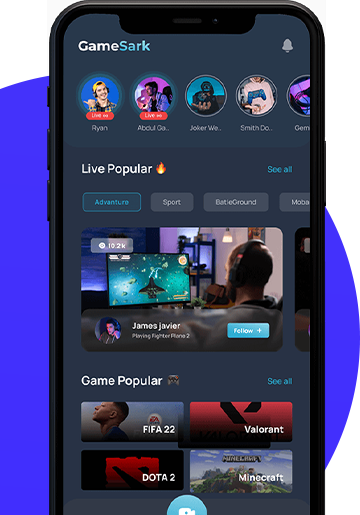
-

-
Date August 12, 2024
Mobile App Development: Essential Steps for Success Of Your Business
Mobile apps may not have been important in the old days for a business, but they are today. They’re like having a 24/7 salesperson in everyone’s pocket. Simply put, apps help you connect with customers and boost sales. They can also make your business run more smoothly. Plus, a good app can make you stand out from other businesses.
Want to create an app? It’s not easy to do alone, so you should hire a mobile app development company. They can help with making your app. Want to know how? Keep reading!
Recent Topics
Understanding the Mobile App Market
The mobile app market is huge. There are millions of apps available for download. This means there’s a big chance for mobile app development. Popular app categories include gaming, social networking, and e-commerce. But now, we have some new and exciting areas. You may have heard of AR, VR, and AI. These are also growing quickly, and many people are using them.
Mobile app companies need to know what their audience likes. This helps their apps to be successful. Understanding what people want is key. Looking at what other apps are doing can also help. This is called market research. By studying App Development Services and learning about competitors, companies can create better apps.
What Your App is For
Your app needs a clear reason to exist. Ask yourself: What problem does it solve? How does it help people? You should also set goals for your app, like getting lots of people to use it or making money. These goals should match what your whole company wants to do. But keep checking how well your app is doing and count how many people use it. After all, monitoring is key.
Making a Plan
You need a plan first. Decide when you want to finish each part of the app. Also, figure out how much money you can spend. Think of it like a roadmap for your app.
You should also start with a simple version of your app first. This is called an MVP. It helps you learn what people think of your app fast. You can use what people say to make your app better later on.
How to Build Your App
There are different ways to make an app. Each way has its good and bad points.
Native apps work best on one kind of phone (like an iPhone or Android). They are really fast and look great, but they take longer to make and cost more money.
Hybrid apps can work on different kinds of phones. They are also cheaper and faster to make. However, they might not be as good as native apps.
Web apps work on any device that can use the internet. They are easy to change but aren’t as powerful as other types of apps.
If you’re like me and find it difficult to decide, then consider what you want to do and how much money you have. Ultimately, your choice depends on the tech stack you select. Moreover, you can go for third-party services like a mobile app development company. There’s no doubt you will receive the best app development services.
Design and User Experience (UX)
When it comes to designing an app, you design it yourself first. Of course, you would want to keep it clear and simple because a good app should be easy for everyone to use. Start by planning how it will look and work. For that, you make wireframes and prototypes. You can use tools like Sketch or Figma for that. Before finishing, test the app with real people to find and fix any problems.
Consistency means the app works the same way everywhere. When the app is simple, it makes it easy to guide. Accessibility ensures everyone, including people with disabilities, can use the app. Prototypes let you see how users interact with the design. Their feedback helps you improve the app. (Think of it like a practice run before the final performance!)
Development and Coding Best Practices
To make a great app, follow coding standards and guidelines. This helps keep your code clean and easy to manage. Add strong security measures like data encryption and secure logins to protect user information. Also, make sure your app runs fast by cutting down load times and using resources wisely.
Coding standards keep everything consistent, making the code simpler to read and fix. Good security keeps user data safe and prevents hacks, which helps build trust. Optimizing performance keeps the app running smoothly. This way, users don’t get frustrated and leave because it’s too slow.
Testing and QA
Testing is very important. It makes sure your app works well before it’s released. You need to try different types of tests:
- Unit Testing: Check each part of the app to see if it works right. This makes sure each section does what it’s supposed to.
- Integration Testing: The different parts of the app should work well together. This will help catch problems with how the pieces interact.
- User Acceptance Testing (UAT): Have real users test the app, Why? To make sure it meets their needs and works as they expect.
Use both automated tests and manual checks. Tools like JIRA help track and fix bugs. Beta testing with a small group of users gives you useful feedback to make final tweaks. (Think of it like a dress rehearsal—fix any issues before the big show!)
Deployment and Launch
Before you launch your app, get it ready for the App Store and Google Play Store. You do this by following their rules. Make a marketing plan that includes building excitement before the launch, running social media campaigns, and working with influencers. After the launch, keep an eye on how the app performs and listen to user feedback to fix any problems quickly.
The submission process means making sure your app meets all the store’s rules, like design and content guidelines. A good marketing plan helps create buzz and get more downloads. Once the app is live, watch for any issues and use feedback to make improvements. (It’s like prepping for a big party—make sure everything is perfect and keep checking in with your guests!)
Post-Launch Maintenance and Updates
Keeping your app fresh and working well means updating it regularly. Use Google Analytics and Mixpanel to monitor your app. This way, you can listen to what users say. Add new features based on what users want and make sure your app works with the latest phones and operating systems.
Regular updates fix bugs and boost performance. They also keep users interested by bringing new features. Watching feedback and performance helps you see how users use your app and find ways to make it better. (Think of it like keeping a car in top shape—regular check-ups make sure it runs smoothly and stays exciting to drive!)
Conclusion
If you want a successful mobile app, it means you gotta create by following a clear plan from start to finish. Thus, by sticking to the steps mentioned in this article and keeping up with the latest trends, you can use mobile app development to grow your business. So, get started on your app today and see your business succeed in our mobile-focused world! (It’s like setting up a solid game plan for a big match—get everything right, and you’ll be winning in no time!)
- Mobile App Development
- Mobile App Development Agency
- Mobile App Development Company
- Mobile App Development Services
Recent Topics






